If you’re thinking of hiring a professional designer for your project through a CAD service company, besides checking their curriculum and portfolio, and apart from inquiring what industry they specialize in, you’re also going to want to check what particular CAD software tool they use.
Why?
Because software has a huge impact on the way CAD designers work. Using the right software may push your project forward while the wrong one might make you hit an otherwise avoidable wall.
You’re probably aware that there are plenty of CAD software solutions out there. Each of them has its own set of pros and cons.
Freelance product designers will usually choose which software they use based on personal criteria such as the industry they specialize in, the functions and features they like to use, how easy a program is to use and, let’s not forget, whether they can afford it or not.
The existence of so many software options and so many fields in which design is essential implies that any given CAD service company will undoubtedly present you, as their potential client, with a wide range of options to choose from.
But, how do you decide? What criteria do you base your decision on?
Criteria for Choosing between AutoCAD and Revit Designers
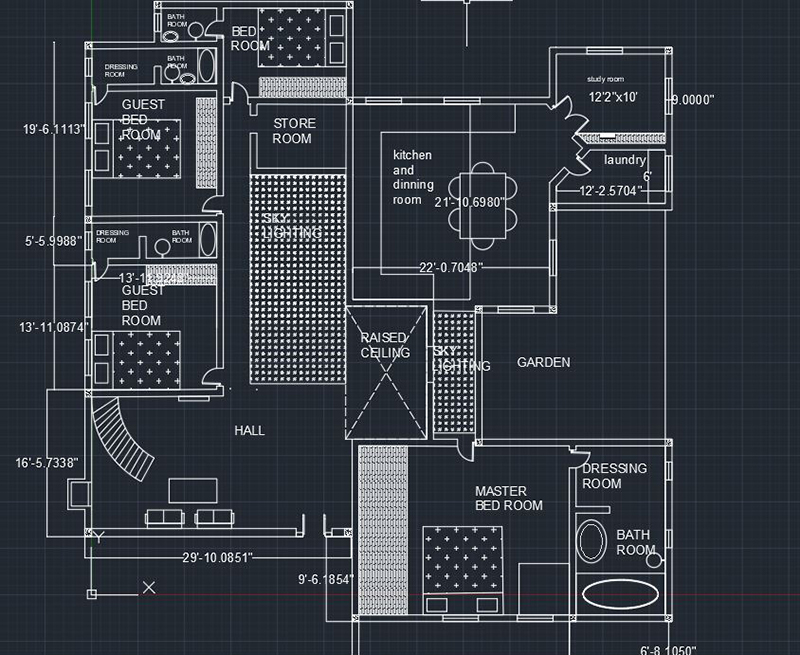
The key points you want to take into consideration when asking a design company for software options, and for choosing the right designer and their CAD software, are:
The key points you want to take into consideration when asking a design company for software options, and for choosing the right designer and his CAD software, are:
- The specific industry a CAD program was originally designed for
- The included design features and functionalities of the program
- Collaborative and business features
- File type compatibility and import/export functionalities
- Cross-platform compatibility
As you read on, you’ll learn how to weigh these criteria one after the other in order to make your decision.
AutoCAD
AutoDesk is one of the CAD software industry’s leading companies. It offers a whole range of solutions tailored for many different applications spanning anything from architectural design and product development to the aerospace industry.
AutoCAD is the flagship software solution used by AutoCAD drafting services. It commands the respect of anyone related to the CAD industry, its native DWG file format being an industry standard in its own right.
It’s one of the oldest CAD software programs around but that doesn’t mean it’s outdated. It’s receiving yearly updates like all other AutoDesk products.
Revit
Revit, also published by AutoDesk, is the company’s solution for tackling the construction industry’s current trends: Building Information Modeling or BIM.
So, if you ask your CAD service company for software options, and you’re presented with the option to use either AutoCAD or Revit design services, which one should you choose?
In this article, we’ll show you how to decide between two of AutoDesk’s top software solutions based on the five criteria mentioned above. Read on to find out!
Intended Industry
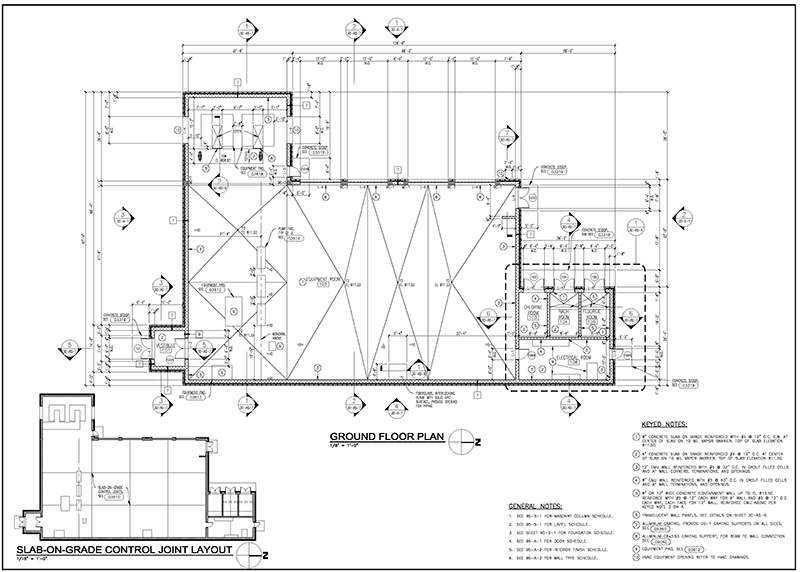
The specific industry in which a program or software package was first designed for is one of the first and most important criteria to take into consideration when choosing your designer’s CAD software.
Most software programs were originally written with a very specific industry in mind. Therefore, even though the program might have evolved to include many new functions useful in other fields, odds are it will be best suited for that first industry.
If we compare AutoCAD and Revit regarding the industry, you’ll see that they’re related. AutoCAD was originally conceived for 2D architectural drawing services and construction design, and it wasn’t until later that it developed 3D design capabilities useful in other fields.
Similarly, AutoDesk created Revit specifically for the construction industry from the ground up, but with the aim to fill a growing niche in the market that’s quickly becoming mainstream, and that AutoCAD didn’t (and doesn’t) address: Building Information Modeling.
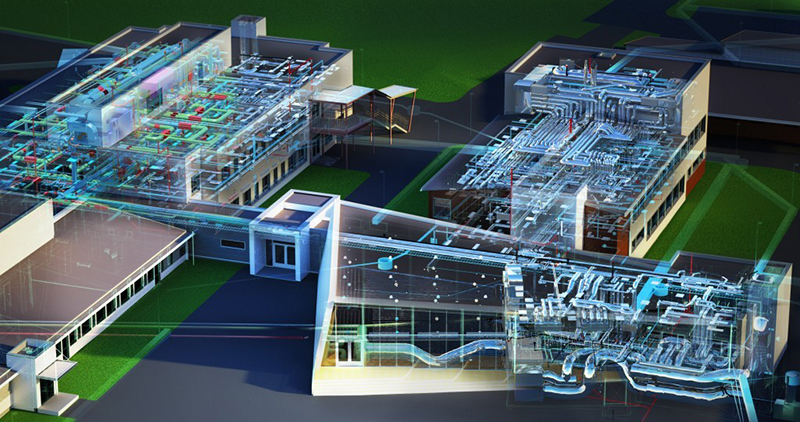
AutoCAD is more of an updated classic that stays true to its roots and ways of getting things done. It may get some cool new upgrades every now and then, but the main UI and the most important functions like 2D drawing and 3D modeling remain essentially the same.
Instead of empowering AutoCAD with functions for BIM, AutoDesk decided to develop an entirely new software program for that particular set of functions.
Moving on, it’s worth mentioning that since AutoCAD has been around for over three decades, virtually every industry that relies on CAD software has benefited from its use.
Consequently, only roughly a quarter of AutoCAD users belong to the architectural design and planning industries, its original intended industry. Still, almost half of its users do belong to construction-related industries like civil engineering, construction, electrical engineering, etc. The rest belong to a very heterogeneous group of industries.
Revit was also developed for the architectural design and construction industries. The strongest features included in this software package are far more specific than in AutoCAD. So, almost three-quarters of all Revit users are somehow related to those industries, more than half of them working on architecture and planning.
How to Decide Based on Your Industry?
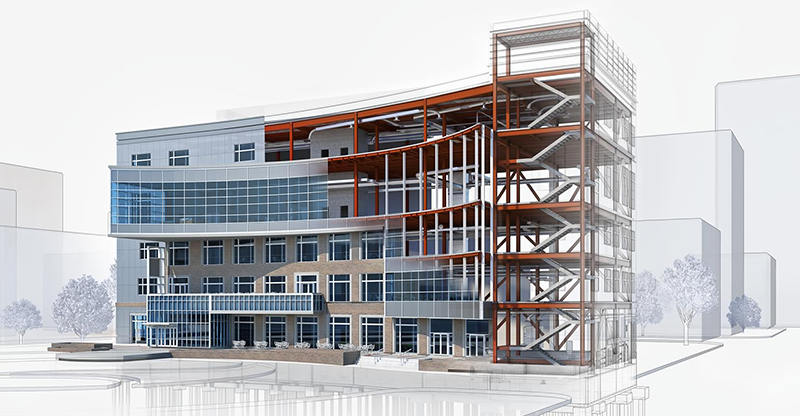
Now that we know what these programs were designed for, let’s discuss how to decide which one best suits your industry. As always, there are plenty of other AutoCAD alternatives options out there but we’ll concentrate on these two.
We will comment, however, that for some of their most popular applications, these two programs are almost “as good as they get.” To aid your decision-making, you can use the following table as a guide:
| Industry/Type of Design | Choice |
| Architectural Design and Construction without BIM | Your best bet is with AutoCAD |
| Architectural Design and Construction with BIM | Revit is one of the best in the market |
| Civil Engineering Design and Simulation | It’s a close tie, but AutoCAD takes the lead |
| 2D and 3D Mechanical and Industrial Design and Engineering | Choose Revit if you require solid modeling, in any other case go for AutoCAD |
| Product Development | Most people choose AutoCAD |
| 3D Rendering and Animation | There are better software options for this industry. However, if it comes to these two options, go for Revit. Users rate its rendering function better than AutoCAD’s. |
As mentioned before, AutoCAD is used in a great number of industries whereas Revit is almost a niche product, dedicated to BIM.
However, since all CAD software shares a common set of functions that are, in general, useful for taking on almost any 3D design task, don’t be surprised if you find a designer who ends up putting Revit to unexpected uses in the future.
Design Features and Functionality
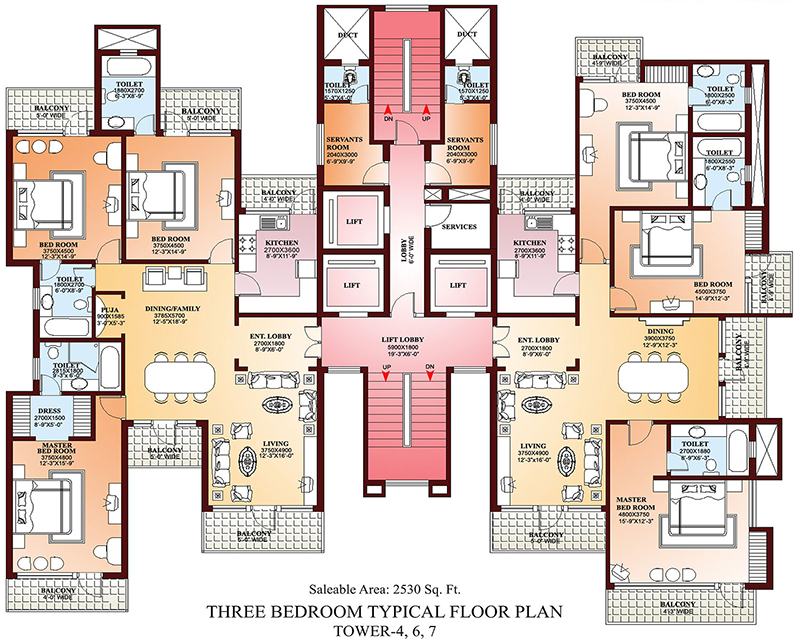
Design features and functionalities refer to the different aspects of 3D design that a CAD software tool can be used for. These functions and features may include one or more tools and sets of complex processes programmed into the software.
For example, 2D drawing functions encompass a bunch of tools for drawing lines, curves, splines, ellipses, etc. Modeling features may include solid modeling tools, parametric modeling tools, and the like.
Since AutoCAD and Revit are, in some aspects, similar, they share many features and functions. Even though the same company publishes both programs, more often than not, one will always excel in a common function over the other.
First, we’ll compare both programs in their common tasks and toolsets. Afterward, we’ll mention tools included in one but not the other. “Age before beauty,” as they say. The following is a list of design features and functions in which, according to user reviews, our all-time classic AutoCAD outperforms Revit.
- 2D drawing, no matter what type of design it’s used for
- Editing tools (the ability to edit drawings and models)
- Text editing tools
- Annotation tools
- Customization of UI, commands, scripts, and menus
- Construction tools used for fabrication, reinforcement, and clash detection
If you’re a Revit fan, don’t worry, it has its own strengths over AutoCAD. Revit strikes back in the following functions:
- 3D modeling/solid modeling
- 3D rendering
- Documentation
One feature that’s included in AutoCAD but not in Revit is Print Studio, a set of Direct Digital Manufacturing tools that enable you to prepare your models for 3D printing directly from the AutoCAD interface. This is one of the added features that product developers love.
As we mentioned above, Revit includes features designed for Building Information Modeling (it’s the most important tier). These include things like automatic synchronization of models across all views and even across different external applications, work sharing features, automatic schedule updates, connections to access and control external applications from within the Revit UI, functions for building management, and more.
As you can tell by now, AutoCAD is a more versatile software package, whereas Revit is highly specific for the construction industry as a whole. This is evident from the features included in each program as well as from the characteristics of each software tool’s user base.
Collaborative and Business Tools
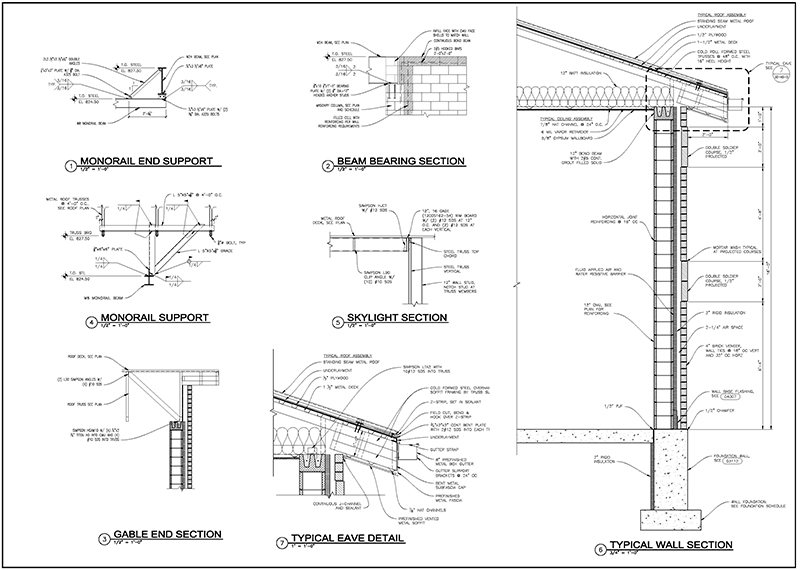
Today’s CAD software packages are equipped with a series of tools used for tasks not necessarily related to computer-aided design, but which add value to the program in users’ eyes. Tools that make collaboration easier and hassle-free are very much appreciated by freelance designers and large companies alike.
Regarding collaboration, AutoCAD has an online version in which any one of the stakeholders can access, view, work on, and collaborate on project files. This online AutoCAD is a cloud-based browser app that can be opened in any computer running any OS, anywhere in the world.
AutoDesk also offers a mobile AutoCAD app so the designer, builder, or the client can gain access to, make comments, edit, and save project files on the go. This is definitively a plus in today’s highly connected world.
Nonetheless, however efficient AutoCAD may be in providing stakeholders with real-time info on a project’s progress, that’s peanuts compared to the spirit behind Revit’s BIM functionalities.
BIM is a design philosophy. It’s a process that encompasses not only everything related to the concept, drafting, planning, and design phases of a given construction project, but it also takes into account the actual construction process and the management of the finished building or infrastructure.
This implies that BIM-oriented software tools, like Revit, must include both multidisciplinary collaboration tools on steroids and business features logically organized and rolled up into one neat package.
Revit includes a huge set of tools for different construction-related disciplines and others that link Revit to other software packages from within the UI to allow accessing and editing the output files from those programs in real-time.
So, not only can you perform most of the tasks needed for the project with the included tools, but the same platform can be used to control external programs as well.
Summarizing, even though AutoCAD has great collaborative and business tools that’ll rival most of its direct competitors, it comes short when compared with Revit.
File Type Compatibility
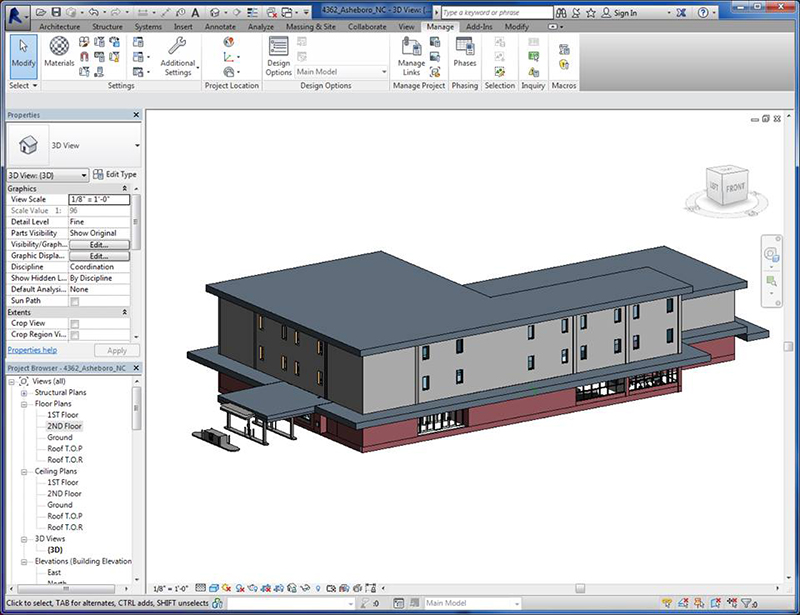
File compatibility is a major factor to take into account when choosing the software tool you want your designer to use. Each computer program has its own set of program-specific file-types, referred to as native files, which are recognizable by their extension.
When a computer program recognizes a file extension, it immediately knows what information is stored in the file and where it’s written. This allows the program to “read” the file and “understand” it.
Many programs can only read their own native files, but some may import other file types written by other applications so that they can access the information therein. The opposite process, exporting files, enables an application to write files readable by other applications.
When choosing software, it is essential that your program is able to read your project files as well as to produce files you may be able to open with other applications. For example, if have a 3D model of a car made in some 3D CAD program and you want to put the model in a scene with a building you just finished designing on Revit, you need Revit to be able to import that model.
You really only need a program to be able to read the files you already have and wish to use, and you only need the program to be able to export the file types that you will be using further down the design or construction process. However, if you’re unsure as to which files you may need, then the more file-types compatible with your software, the better.
In the following table, you’ll find a complete list of all the file types AutoCAD and Revit can handle. Use this table as a reference to choose the software that’s compatible with all the work-files you’ll be providing your designer with, and to make sure they will be able to provide you with the right output files.
 |  | |
| Native Files | DWG | RVT, RFA, RTE, RFT |
| Imported File Types | 3D Studio (*.3ds) ACIS (*.sat) AutoDesk Filmbox (*.fbx) CATIA V4 (*.model; *.session; *.exp; *.dlv3) CATIA V5 (*.CATPart; *.CATProduct) DGN (*.dgn) IGES (*.iges; *.igs) Inventor Assembly (*.iam) Inventor Part (*.ipt) JT (*.ij) Metafile (*.wmf) Parasolid (*.x_b) Parasolid (*.x_t) PDF (*.pdf) Pro/E Assembly (.asm) Pro/E Granite (*.g) Pro/E Neutral (*.neu) Pro/E Part (.prt) Rhino (*.3dm) SolidWorks Assembly (*.asm; *.sldasm) SolidWorks Parts (*.prt; *.sldprt) STEP (*.ste; *.stp; *.step) | 3D DWF (*.dwf) ACIS SAT (*.sat) AutoCAD Drawing (*.dwg) AutoCAD Drawing Exchange Format (*.dxf) Bitmaps (*.bmp) Delimited text (*.txt) HTML (*.html) Industry Foundations Classes (*.ifc) Joint Photographic Experts Group (*jpeg; *.jpg) Mass model (*.gbxml) Microstation DGN (*.dgn) Open database (*.odbc) Portable net graphics (*.png) Rhino (*.3dm) Sketchup (*.skp; *.dwg) Tag image file (*tif) |
| Exported File Types | 3D DWF (*.dwf) 3D DWFx (*.dwfx) ACIS (*.sat) AutoCAD Drawing Exchange (*.dxf) AutoDesk Filmbox (*.fbx) Bitmap (*.bmp) Block (*.dwg) DXX Extract (*.dxx) Encapsulated PS (*.eps) IGES (*.iges; *.igs) Lithography (*.stl) Metafile (*.wmf) V7 DGN (*.dgn) V8 DGN (*.dgn) | 3D DWF (*.dwf) 3D DWFx (*.dwfx) ACIS SAT (*.sat) AutoCAD Drawing (*.dwg) AutoCAD Drawing Exchange (*dxf) AutoDesk Filmbox (*fbx) Bitmaps (*.bmp) Building Site (*.adsk) Delimited text (.txt) DGN (*dgn) Industry Foundation Classes (*.ifc) Joint Photographic Experts Group (*jpeg; *.jpg) Mass model (*.gbxml) Navisworks (*.nwc) ODBC Database (*.odbc from Microsoft®Access; Microsoft® Excel; Microsoft® SQL Server) Portable net graphics (*.png) Solar Study Videos (*.avi) Tag image file (*tif) Truevision Advanced Raster Graphics (*.targa) Walkthrough Videos (*.avi) |
As you can see, AutoCAD can import more file types from more third party design apps than Revit, but the latter takes the lead regarding file export options (that probably has something to do with BIM).
This implies that AutoCAD is compatible with more file types, and it will be more probable that your designer will be able to correctly open any file you throw their way. Revit, on the other hand, provides a lot more exporting options, giving you and your designer more freedom to produce almost any kind of output.
It’s worth mentioning that AutoCAD’s native DWG file format is a CAD industry standard that virtually any CAD software tool can import. This means that AutoCAD doesn’t really need that many file export options.
Last but not least, we have to talk about backward compatibility, which is the ability to create files that can be opened by older versions of a program. Once again, AutoCAD beats Revit in this respect, since many Revit users have complained about the difficulty to open newer files in older versions of the mentioned CAD tool.
Cross-Platform Compatibility
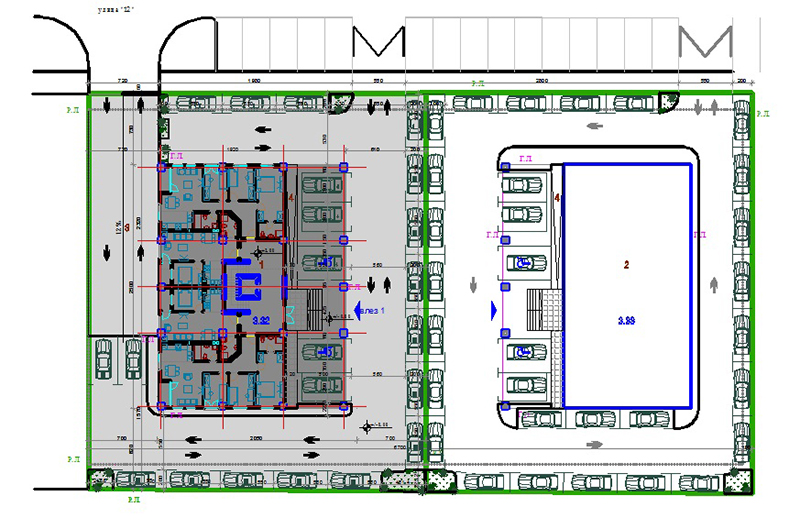
Most AutoDesk products are available for Windows and Mac, and some of them, like AutoCAD, are even available for mobile devices. Add that to a cloud-based web app and you’ll realize that AutoCAD offers its users almost complete platform independence, and the freedom to work from anywhere and with any computer or device.
Revit only works under Windows (7, 8, or 10). This is a bit of a letdown for Apple-loving AutoDesk software fans who are accustomed to having their own MacOS version of their favorite AutoDesk products.
Having said that, Revit can be run under MacOS virtually, from within Parallels Desktop 11® (a Windows 7, 8, or 10 emulator), but it requires powerful hardware in order to run smoothly.
This is to be expected: you would be running two operating systems at the same time, as well as Revit, which already resources intensive. The recommended system requirements include 16gb Ram and a quad-core 2.7 GHz i7 processor! That’s far from cheap!
However, don’t be quick to discard Revit just because of this. If you plan to work with BIM, Revit can help you and your designer/architect/engineer save huge amounts of time by making the whole process much more efficient and streamlined. You’ll get all of the project’s information integrated and organized in one single platform, making managing the building a breeze, once the builders finish their job.
Since time is money, investing in a new, powerful, and expensive piece of hardware that’ll run Revit without a hiccup may be well worth it.
Now that we’ve covered all you need to know, you’ve probably realized that the choice is not a simple one. In general terms, you could say that choosing Revit only makes real sense if you’re planning a construction project using BIM. In almost any other case, you would probably end up choosing AutoCAD.
Not decided yet? Don’t panic, just ask yourself and your CAD company the following questions, and use this article to guide you toward a decision.
- What type of design are you going to commission?
- What information does the designer or design firm need?
- Do you need or wish to provide previous project files to be used as a base for the current design? If that is the case, what files does the designer need and in what format?
- What is the design going to be used for? (Rendering, printing, 3D printing, animating, construction, simulating, prototyping, advertising…)
- What files do you need the designer to hand in once finished, and in what format? (3D model file, 2D drawings, blueprints, photo-real renders for presentations.
The Bottom Line
There is no ideal CAD software tool, so you’ll most likely have to prioritize your needs and compromise when making your choice. Take care to discuss your options with the designer or CAD service company so that you can make a well-informed decision. Either way, you can rest assured that an expert designer, like the ones we work with here at Cad Crowd, will be able to work around any problems.
Cad Crowd Has Freelance AutoCAD and Revit Designers
If you are looking for freelance AutoCAD or Revit designers, Cad Crowd can help. Our pre-vetted and confidential designers offer AutoCAD drawing services and more. Learn how it works.
You can also receive multiple submissions with different design concepts and choose the one that you like the most. Find out how to launch a design contest to do that.
